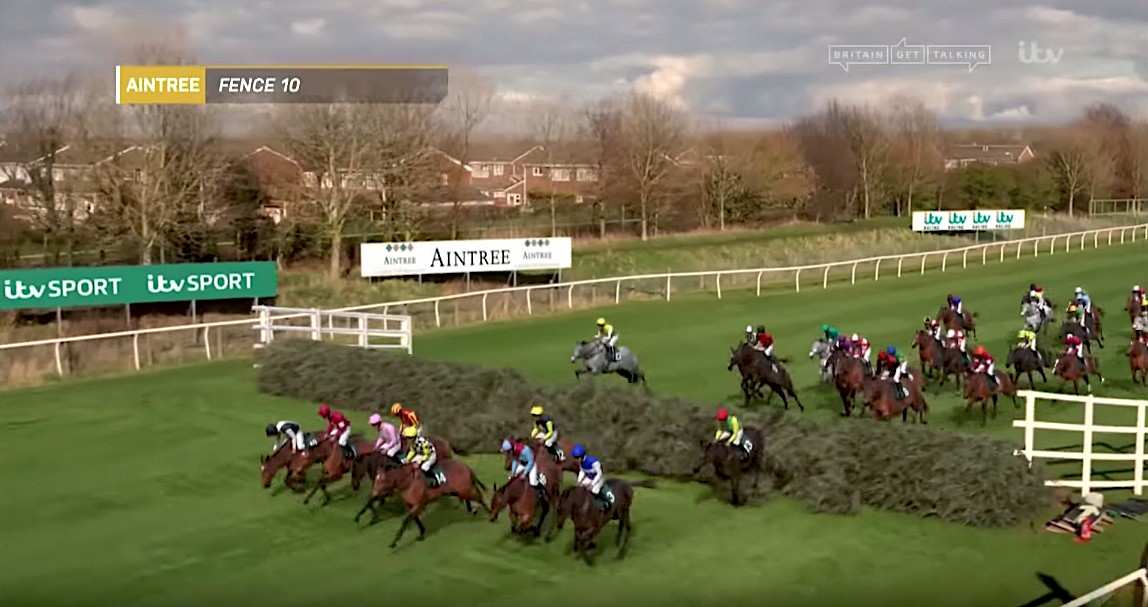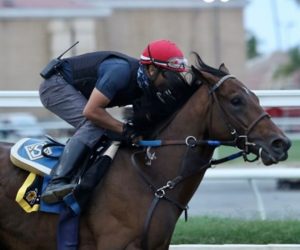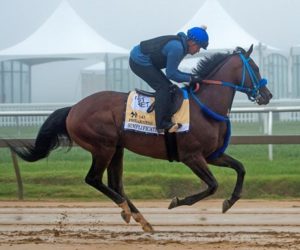The good news was, no horses were injured during the Virtual Grand National, which was viewed by a peak audience of nearly 5 million viewers throughout the United Kingdom. And the bookmakers earned a respectable profit, which they donated to charity.

The bad news? No real horses ran in Saturday’s Virtual Grand National. The computer simulation, however, provided bettors and sport-starved horse racing fans with action, bookmakers throughout the UK and Ireland with business, and a TV network with some quirky and welcomed programming.
Oh, and it provided a quirky outcome, with 18/1 shot Potters Corner upsetting favored Tiger Roll and “spoiling†his bid for a three-peat in the nation’s most widely bet race.
Dating to 1839 and rich in history, the Grand National is the most popular race in the UK and enjoys the biggest betting handle of any race in the country. This is because – like the Kentucky Derby in the United States – this race attracts both casual and the rabid fan in equal parts. Thousands of residents who make only one racing bet a year make it on the Grand National.
Jockey Club Racecourses, which owns Aintree, canceled the Grand National last month, due to the COVID-19 pandemic. They have no intention of running it in the fall.
Cancellation Blows Nearly £500 Million Hole In Economy
Officials from various entities said the race’s first cancellation since 1945 cost bookmakers, the racing industry, and the local economy around Liverpool’s Aintree Racecourse nearly £500 million. Insurance covers only a fraction of that total.
The Virtual Grand National made up only a slight fraction of the estimated £400 million loss bookmakers took on the race’s cancellation. But they accepted bets on the Virtual Grand National, up to a maximum of £10 ($12) each-way per horse.
The books announced Sunday they donated £2.6 million ($3.12 million) in profits to National Health Service charities. Irish books donated their profits to the Irish Red Cross and to other Irish charities.
ITV, which broadcast the Virtual Grand National at its scheduled post time of 5:15 pm (GMT), earned a peak audience of 4.8 million viewers for a 30 share and an average audience of 4.3 million (28 share). That surpassed the peak audience for the Cheltenham Gold Cup (1.6 million), the 2019 Derby (1.75 million), and Royal Ascot (daily average peak of 1.25 million).
The audience paled, however, to the real Grand National. Nearly 10 million viewers watched Tiger Roll repeat as champion last year.
Computer Simulations Prove Surprisingly Accurate
For the last three years, the network ran computer simulations before the real race that were surprisingly accurate and surprisingly well-viewed, with last year’s Virtual Grand National drawing in 737,000 viewers. In each of the past three years, the virtual winner finished among the real race’s top three, including in 2018, when the computer spit out Tiger Roll as the champion. He went on to win the real race.
So what happened in this year’s Virtual Grand National? First, an explanation on how it works.
Computer programmers used CGI technology and proprietary algorithms to simulate the race. They fed relevant variables into the algorithms, such as weather conditions, recent form, form on the Aintree track, weight and age, among others. The program then created a list of fixed odds on each horse, and used a random number generator to pick the top-four finishers.
Tiger Roll Couldn’t Virtually Get It Done
The Virtual Grand National played out in unpredictable fashion. As the 5/1 favorite, Tiger Roll took the lead at The Chair fence near the halfway mark of the 4 ¼-mile test. But his uncharacteristically aggressive “tactics†tired him out on the home turn. That opened the door for 66/1 shot, Aso, to seize control. He was five lengths in front, but fell at the second-to-last fence.
Enter Potters Corner, a Welsh horse trained by Christian Williams and ridden by 17-year-old Jack Tudor. He took the lead, held off a challenge from Walk in the Mill, and came home to victory at 18/1. Any Second Now was third, Tiger Roll fourth.
Potters Corner won the real Welsh National and the Midlands National last year, so – while quirky — his victory wasn’t a total shock. Had this been a real race, Tudor would have been the youngest Grand National winner since 1938.
Instead, he’s a nice footnote to a welcome distraction for race fans.
Finishing Positions
Virtual Grand National
- Potters Corner 18-1
- Walk In The Mill 16-1
- Any Second Now 10-1
- Tiger Roll 5-1
- Burrows Saint 12-1
- Pleasant Company 28-1
- Ballyoptic 25-1
- Kimberlite Candy 16-1
- Top Ville Ben 45-1
- Vintage Clouds 33-1
- Peregrine Run 66-1
- The Storyteller 40-1
- Talkischeap 25-1
- Dounikos 50-1
- Kildisart 50-1
- Alpha Des Obeaux 25-1
- Beware The Bear 33-1
- Anibale Fly 20-1
- Death Duty 50-1











